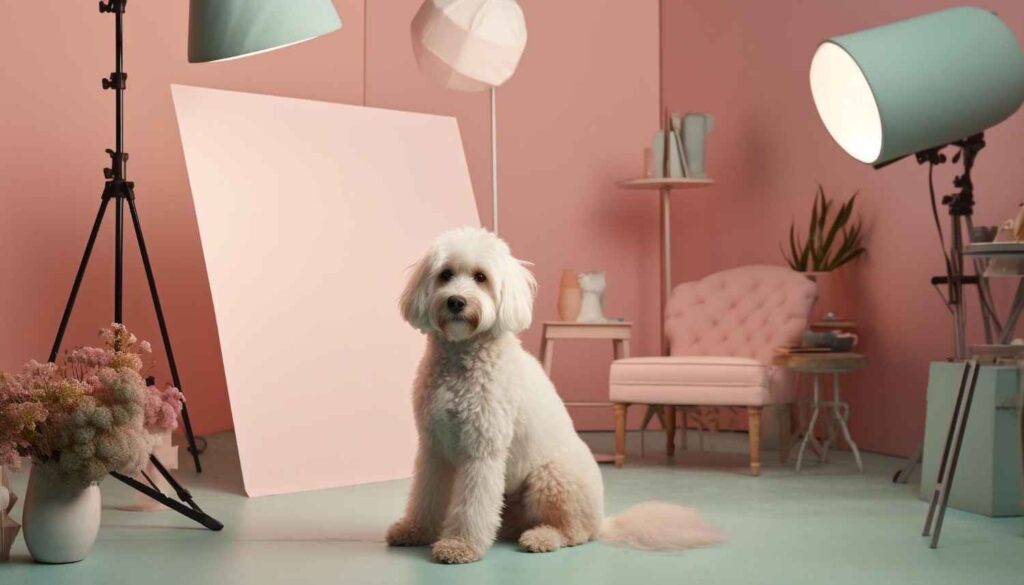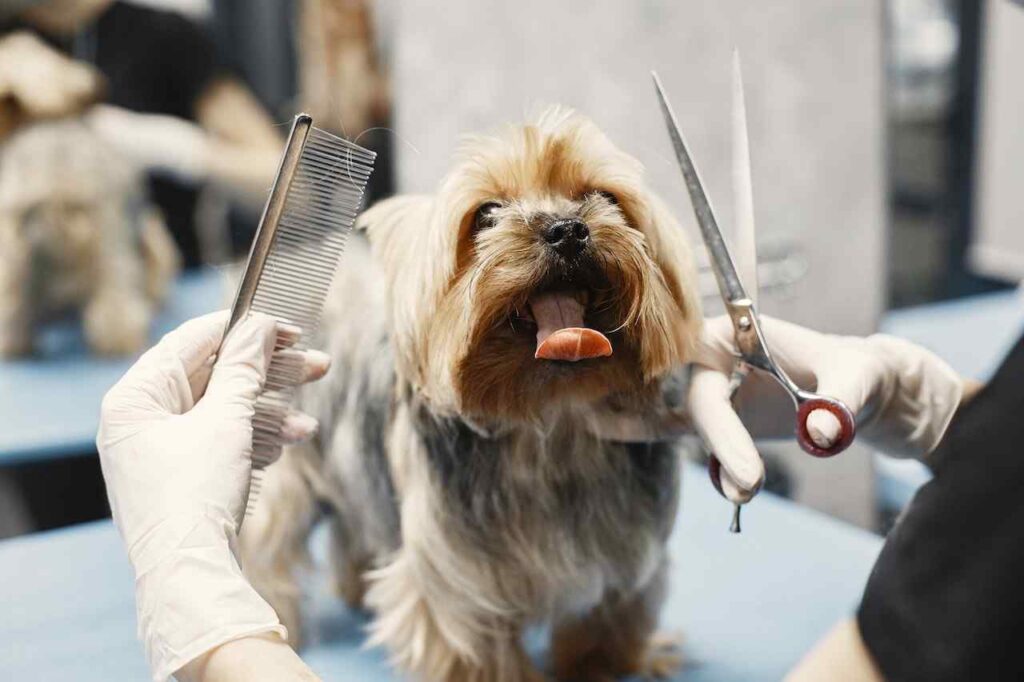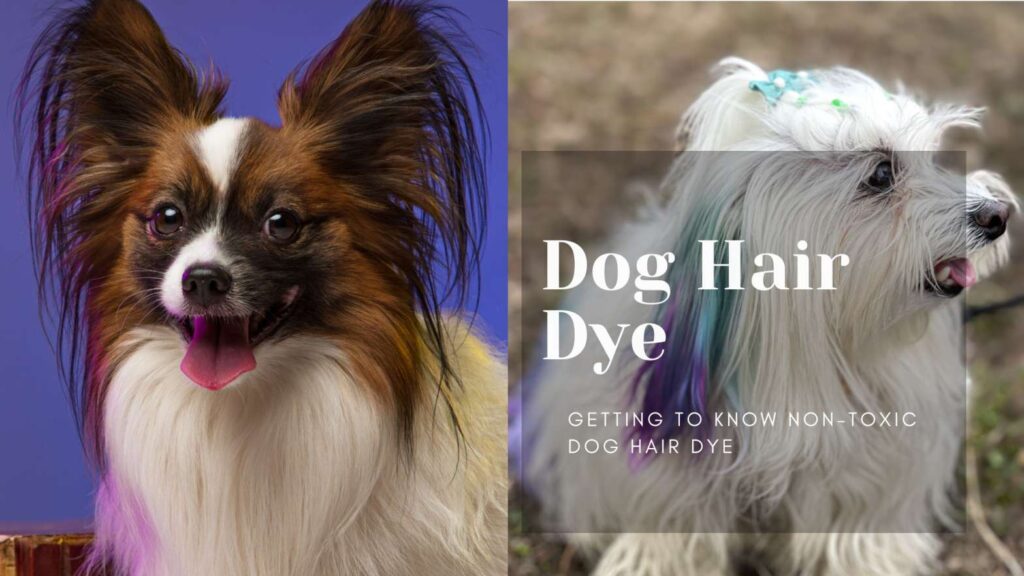
Table of Contents
Introduction to Dog Grooming
Why grooming is essential for dogs
Dog grooming at home is very important in maintaining the overall health of your beloved pet dog. Beyond improving their appearance, grooming helps prevent various skin conditions, keeps their coat in optimal condition, and promotes a healthy bond between you and your furry friend.
Advantages of dog grooming your at home
If you get expertise on dog grooming at home then it will save your time and money both and you will be stress free for your pet.. Grooming your dog in a familiar environment allows them to feel relaxed, which ultimately results in a more enjoyable grooming session.
Understanding Your Dog’s Coat and Breed
Identifying different coat types and their grooming needs
Understanding your dog’s specific coat type is essential to provide appropriate grooming care. There are three primary coat types:
- Short-haired breeds: Short-haired dogs, such as Beagles or Boxers, require regular brushing to remove loose hair and maintain a glossy coat.
- Long-haired breeds: Breeds like Shih Tzus or Afghan Hounds have long, flowing coats that necessitate frequent brushing to prevent mats and tangles.
- Double-coated breeds: Dogs like Siberian Huskies and Golden Retrievers have a dense undercoat beneath their outer coat. This requires regular brushing to minimise shedding and prevent the undercoat from matting.
Grooming considerations based on breed characteristics
It is very difficult to identify the factors such as their size, temperament, and specific breed needs ,at the time of grooming your dog. Larger dogs may require more robust grooming tools, while smaller breeds may need more gentle handling. Understanding common grooming challenges specific to your dog’s breed will help you prepare and address them effectively..
Essential Tools and Equipment for Dog Grooming at Home

Choosing the right grooming supplies
Investing in high-quality grooming supplies is vital to achieve professional results at home. Consider the following essentials:
- Brushes and combs: Selection of appropriate brushes and combs depends on your dog’s coat type. For example, slicker brushes work well for removing loose hair, while metal combs are great for detangling.
- Clippers and trimmers: Depending on your dog’s coat length and your desired grooming style, choose clippers and trimmers suitable for their specific needs.
- Shampoos and conditioners: Ensure you use dog-specific shampoos and conditioners, as human products can be harsh and potentially harmful to their skin.
Safety precautions when using grooming tools
To ensure your dog’s safety , follow these guidelines:
- Proper handling and maintenance: Needs clean and inspect grooming tools to ensure they are in good condition and free from any potential hazards, such as sharp edges or loose parts.
- Dog’s comfort and safety: Be careful of your dog’s comfort levels by using appropriate grooming methods and applying gentle pressure when necessary to prevent any discomfort or injury.
Preparing Your Dog for a Grooming Session

Establishing a grooming routine and environment for dog grooming at home
Creating a calm and comfortable grooming environment is crucial in achieving a successful grooming session. Consider these tips:
- Creating a calm and comfortable space: Select a quiet area in your home where your dog feels secure and relaxed. Choose a non-slip surface for grooming, such as a rubber mat, to provide stability and prevent accidents.
- Frequency of grooming sessions: Establish a regular grooming routine based on your dog’s individual needs. While certain breeds may need daily grooming, others may only need weekly or biweekly grooming.
Techniques to familiarise your dog with grooming activities
Introducing your dog to grooming at home activities gradually and positively will help them associate grooming with a positive experience. Consider the following techniques:
- Positive reinforcement and rewards: Praise and reward your dog with treats or verbal affirmations during and after grooming sessions to reinforce good behaviour and create a positive association with the process.
- Gradual desensitisation: Gradually expose your dog to different grooming activities, starting with short sessions and slowly increasing the duration. This helps them become comfortable and less anxious during the process.
Step-by-Step Dog Grooming Guide
Brushing and detangling your dog’s coat on dog grooming at home .
Proper brushing techniques are essential to maintain the health and appearance of your dog’s coat. Consider these steps:
- Proper brushing techniques for different coat types: Use long, gentle strokes when brushing your dog’s coat, ensuring you reach the underlying skin. Adjust your brushing technique based on your dog’s specific coat type on dog grooming at home.
- Dealing with mats and tangles: Gently detangle any mats or tangles in your dog’s coat using a dematting tool or your fingers. Be patient and avoid pulling on the hair, as it may cause discomfort or pain.
Bathing and drying your dog effectively
Bathing your dog requires proper techniques and the right products to ensure a thorough and safe cleaning process. Follow these steps:
- The best shampoo and conditioner to use: Use a shampoo and conditioner made specifically for dogs that meets your dog’s needs, such as hypoallergenic alternatives for skin that is sensitive or moisturising solutions for coats that are dry.
- Safe and efficient bathing techniques: Wet your dog’s coat thoroughly, avoiding the head and ears. Apply shampoo, lather gently, and rinse thoroughly.Your dog should be kept at ease while being dried with a towel or a hair dryer set to low heat.
Trimming and shaping your dog’s nails
Maintaining proper nail length is crucial for your dog’s comfort and overall health. Here’s how to trim their nails:
- Nail clipping vs. filing: Choose a nail trimming method based on your dog’s comfort level and your confidence in handling the tools. Some dogs may prefer nail filing using a grinder over traditional nail clippers.
- Trimming techniques for different nail types: Be cautious when trimming your dog’s nails, avoiding cutting the quick – the sensitive inner part of the nail. Trim small sections at a time and use styptic powder if bleeding occurs.
Cleaning your dog’s ears and eyes
Keeping your dog’s ears and eyes clean is important for their overall hygiene. Follow these steps for dog grooming at home:
- The importance of maintaining good ear and eye hygiene: Cleaning your dog’s ears and eyes on a regular basis helps prevent infections and removes any dirt or debris accumulation that could cause discomfort or suffering
- Gentle cleaning methods and precautions: Use a cotton ball or pad soaked in a dog-specific cleaning solution to gently wipe the outer area of your dog’s ears and around their eyes. Be cautious not to insert anything into the ear canal or directly into the eyes.
Maintaining oral hygiene
Proper dental care is very important for your dog’s overall health. To maintain their dental hygiene, think about the following actions:
- Brushing your dog’s teeth: teeth-brushing for your dog Brush your dog’s teeth gently with a toothbrush and toothpaste made especially for dogs.Start slowly and ensure your dog feels comfortable throughout the process. Gradually increase the duration and frequency of brushing.
- Alternatives to promote dental health: Incorporate dental chews, toys, or treats specifically designed to promote oral hygiene and reduce plaque and tartar buildup.
Dealing with Special Grooming Needs

Handling shedding and excessive hair on dog grooming at home.
Controlling shedding and managing excessive hair growth can be a challenge. Consider these solutions:
- Solutions for controlling shedding: Regular brushing helps minimise shedding by removing loose hair. Using deshedding tools, such as a shedding blade or de-shedding rake, can also be effective for breeds that shed excessively.
- Managing excessive hair growth: Some breeds require regular trims to prevent excessive hair growth from obscuring their vision or causing discomfort. Consider learning how to safely use clippers or seek professional help if needed on dog grooming at home.
Addressing skin issues and allergies
Certain breeds are prone to skin issues and allergies, requiring specific grooming practices to alleviate their discomfort. Consider these tips:
- Identifying common skin problems: Be alert to signs of skin irritation, rashes, or excessive scratching, which may indicate underlying allergies or skin conditions. Consult with a veterinarian to properly diagnose and treat these issues.
- Grooming practices to alleviate allergies: Regular bathing with hypoallergenic shampoos, avoiding potential allergens, and using gentle grooming techniques can help reduce skin irritations in allergic dogs.
Managing odours and bad breath on dog grooming at home
Combatting unpleasant odours and addressing bad breath is crucial for your dog’s comfort and your enjoyment. Try these tips:
- Tips for combating unpleasant odours: Regular bathing, using deodorising sprays made for dogs, and maintaining a clean environment can help minimise odours in your dog.
- Effective solutions for addressing bad breath: Ensure your dog receives regular dental care, including tooth brushing and professional cleanings when necessary. Incorporate dental treats or water additives specifically designed to combat bad breath.
Advanced on diy dog grooming at home Techniques
Mastering the art of creative grooming
For those looking to showcase their creativity, creative grooming techniques allow for unique and artistic styles. Consider these tips:
- Styling and colouring techniques: Creative grooming includes techniques such as dyeing, sculpting, or trimming fur into intricate patterns or designs. Research and learn about the specific products and techniques before attempting creative grooming.
- Safety precautions and expert tips: Creative grooming should only be attempted by experienced groomers, as certain products or techniques may pose risks to your dog’s well-being. Always prioritise safety and consult professionals if needed.
Understanding show grooming standards
Preparing your dog for dog shows requires attention to details and adherence to specific grooming standards. Consider these steps:
- Preparing your dog for dog shows: Familiarise yourself with the grooming standards outlined by the specific dog show organisation or breed association. This may include specific coat lengths, trimming styles, or overall presentation criteria.
- Achieving the desired show look: Ensure your dog’s coat is in optimal condition by following proper grooming techniques specific to their breed. Pay attention to details such as nail length, ear cleanliness, and overall grooming presentation as required by show standards.
Proper Aftercare and Maintenance on dog grooming at home
Post-grooming care routine
After completing a grooming session, it is crucial to follow a post-grooming care routine. Consider these steps:
- Brushing and checking for missed spots: Thoroughly brush your dog’s coat after grooming to remove any loose hair or missed tangles. This helps maintain a well-groomed appearance and uncovers any areas that may require further attention.
- Applying finishing touches: Use finishing sprays or mists made for dogs to enhance shine and maintain the desired grooming style. This will ensure your dog looks their best until the next grooming session.
Regular maintenance between grooming sessions
Between professional grooming sessions, you can perform regular maintenance to keep your dog looking and feeling their best. Consider these tips:
- Brushing and combing tips: Regularly brush and comb your dog’s coat to remove any loose hair, prevent tangles, and maintain their overall appearance. Adjust the frequency based on your dog’s coat type.
- Quick touch-ups and freshening tricks: Incorporate quick touch-ups between grooming sessions to address minor grooming needs, such as trimming stray hairs, cleaning their face, or refreshing their coat with sprays made for dogs.
Conclusion
Finally, learning the talent of professional dog grooming at home is a liberating ability that not only saves time and money but also strengthens the link between you and your furry buddy. By understanding your dog’s specific grooming needs, utilising proper tools and techniques, and addressing any special grooming considerations, you can provide exceptional care for your canine companion.
Taking care of your dog’s grooming requirements maintains their general health and enables you to keep their hygiene at a high standard. You can start on a grooming trip that will result in a well-groomed and content canine friend by adhering to the specified procedures and instructions.
Frequently Asked Questions (FAQs)
A. What if my dog hates grooming?What if my dog hates grooming?
It’s important to approach your dog with patience and good reinforcement if it dislikes being cleaned. Gradually introduce grooming activities, offer treats, and make the experience as comfortable and enjoyable as possible. Consider seeking professional help if needed.
B. How often should I bathe my dog?
The frequency of bathing depends on your dog’s coat type and lifestyle. Generally, most dogs benefit from a bath every 4-8 weeks.Nevertheless, some breeds are likely to be bathed regularly than others
C. Can I use human grooming products on my dog?
It is recommended to use specially formulated dog grooming products rather than human products. Human products may contain ingredients that are harmful or irritating to your dog’s skin. Always choose dog-specific shampoos, conditioners, and grooming solutions.
D. How can I prevent my dog from getting anxious during grooming?
To prevent anxiety during grooming, establish a positive grooming routine early on. Use gentle handling, reward good behaviour, and gradually introduce your dog to grooming activities. Additionally, consider using calming aids, such as lavender-infused products, or consult a professional for additional strategies.
E. Are there any specific grooming considerations for puppies or elderly dogs?
Puppies and elderly dogs may require special grooming considerations. For puppies, start grooming training early to familiarise them with the process. Be gentle and patient. For elderly dogs, be mindful of their physical limitations, such as arthritis, and adjust grooming techniques accordingly. Regular grooming can help prevent skin issues or discomfort in both stages of life.


